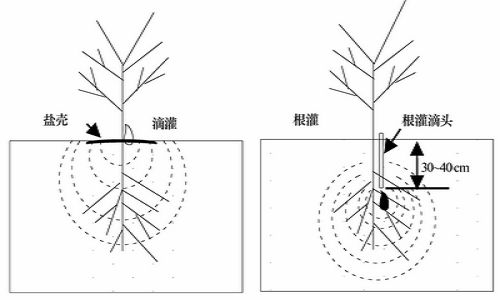Root Irrigation Experiments Used in the Protective Forest Belt along the Tarim Desert Highway
Updatetime:2010-12-30From:
【Enlarge】【Reduce】
Root irrigation is an irrigation technique supplying water directly to a certain depth of soil layer where the plant root distributes, and it is a relatively new water-saving irrigation technique. Root irrigation water-saving experiment was first conducted in the protective forest belt along the Tarim Desert highway in this study. The effect of root irrigation on soil water content was investigated in the experiment and at the same time a comparative experiment with the drip irrigation technique, which was a predominant technique in the irrigation of the forest belt along the Tarim Desert highway, was made. The study results show that the root irrigation technique can save more water than drip irrigation technique does, and its advantages are mainly manifested in the significant increase in soil water content and soil moisture depth, the improvement of irrigation efficiency and the decrease of irrigation duration time. Root irrigation can also effectively reduce the evaporation loss of surface water and salt accumulation in surface soil layer caused by drip irrigation. Root irrigation technique is a more effective water-saving irrigation technique because it can save 30% or more irrigation water compared to drip irrigation technique.
|
Schematic diagram of root irrigation (Picture/Journal of Desert Research) |
Appendix





